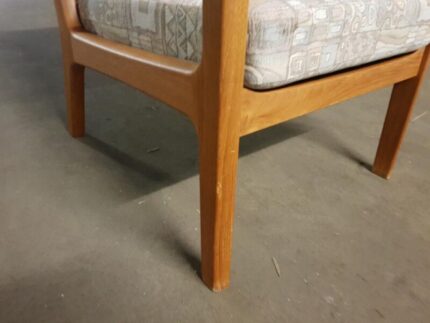Crafted from the most beautiful burr walnut with inlaid decoration and ormolu mounts. It has stunning ornate foliate ormolu handles with inset oval porcelain plaques decorated with courting scenes.
The chest is raised on cabriole supports with decorative ormolu cartouche mounts
A truly gorgeous piece, this deserves pride of place in any furniture collection
Condition:
In really excellent condition having been beautifully cleaned, polished and waxed in our workshops, please see photos for confirmation.
Dimensions in cm:
Height 91 x Width 45 x Depth 31
Dimensions in inches:
Height 3 feet x Width 1 foot, 6 inches x Depth 1 foot
Walnut & Burr Walnut
Walnut is a hard, dense, tight- grained wood that polishes to a very smooth finish. It is a popular and attractive wood whose colour ranges from near white in the sapwood to a dark hew in the heartwood. When dried in a kiln, walnut wood tends to develop a dull brown colour, but when air-dried can become a rich purplish-brown. Because of its colour, hardness and grain, it is a prized furniture and carving wood. Walnut veneer was highly priced and the cost would reflect the ‘fanciness’ of the veneer – the more decorative, then the more expensive and desirable.
Burr walnut refers to the swirling figure present in nearly all walnut when cut and polished, and especially in the wood taken from the base of the tree where it joins the roots. However the true burr is a rare growth on the tree where hundreds of tiny branches have started to grow. Burr walnut produces some of the most complex and beautiful figuring you can find.
Walnut “burrs” were often used to make fabulous furniture. Veneer sliced from walnut burl is one of the most valuable and highly prized by cabinet makers and prestige car manufacturers and is also a favourite material for shotgun stocks.
Inlay was commonly used in the production of decorative burr walnut furniture, where pieces of coloured veneers are inlaid into the surface of the walnut, adding delicate or intricate patterns and designs. Inlays normally use various exotic veneers, but other materials such as brass were also be used.
Ormolu – Gilt Bronze (from French ‘or moulu’, signifying ground or pounded gold) is an 18th-century English term for applying finely ground, high-carat gold in a mercury amalgam to an object of bronze.The mercury is driven off in a kiln leaving behind a gold-coloured veneer known as ‘gilt bronze’.
The manufacture of true ormolu employs a process known as mercury-gilding or fire-gilding, in which a solution of nitrate of mercury is applied to a piece of copper, brass, or bronze, followed by the application of an amalgam of gold and mercury. The item was then exposed to extreme heat until the mercury burned off and the gold remained, adhered to the metal object.
After around 1830 because legislation had outlawed the use of mercury other techniques were used instead. Electroplating is the most common modern technique. Ormolu techniques are essentially the same as those used on silver, to produce silver-gilt..
-
Dimensions:Height: 35.83 in (91 cm)Width: 17.72 in (45 cm)Depth: 12.21 in (31 cm)
-
Materials and Techniques:OrmoluWalnut
-
Place of Origin:France
-
Period:1870-1879
-
Date of Manufacture:circa 1870
-
Condition:Good
-
Seller Location:London, GB
-
Reference Number:Seller: A2703Seller: LU950629519072



























































Reviews
There are no reviews yet.